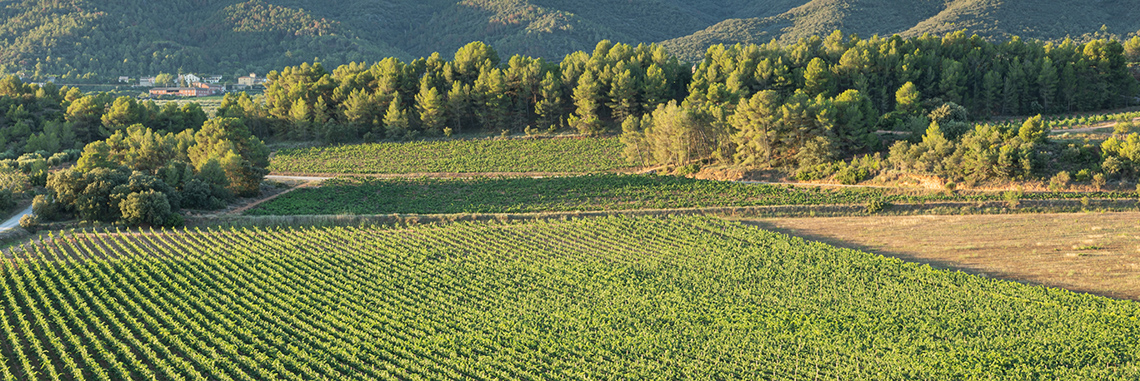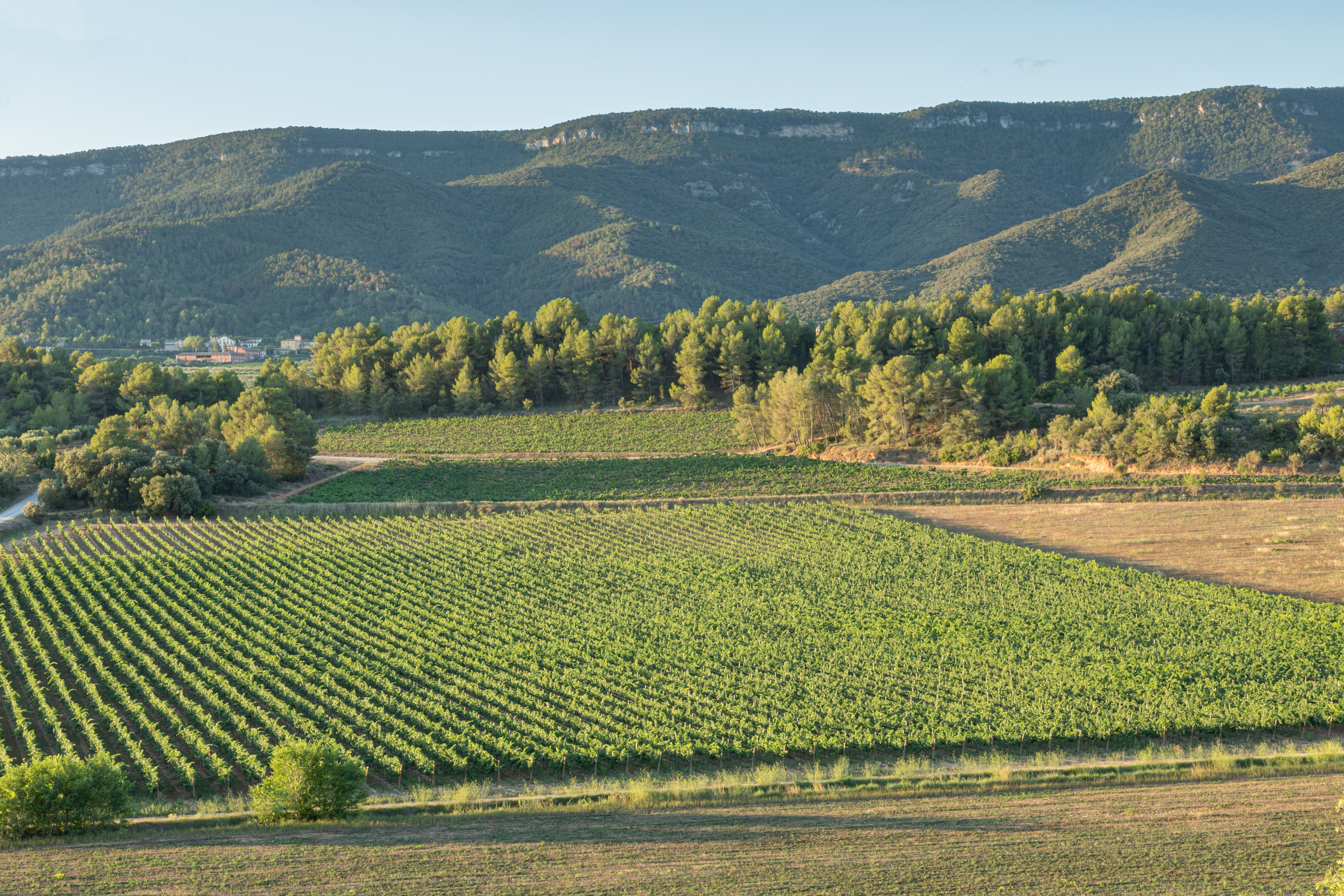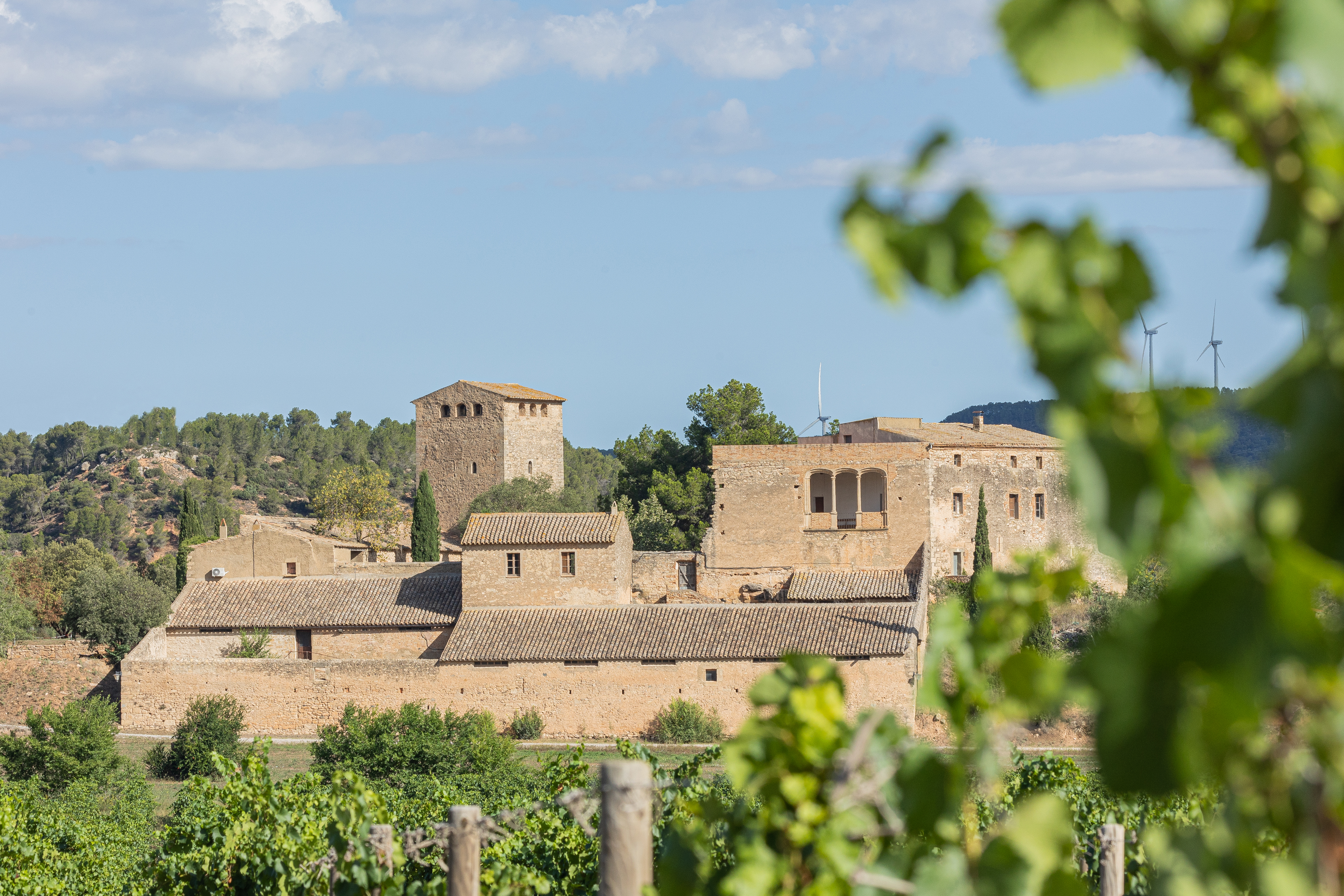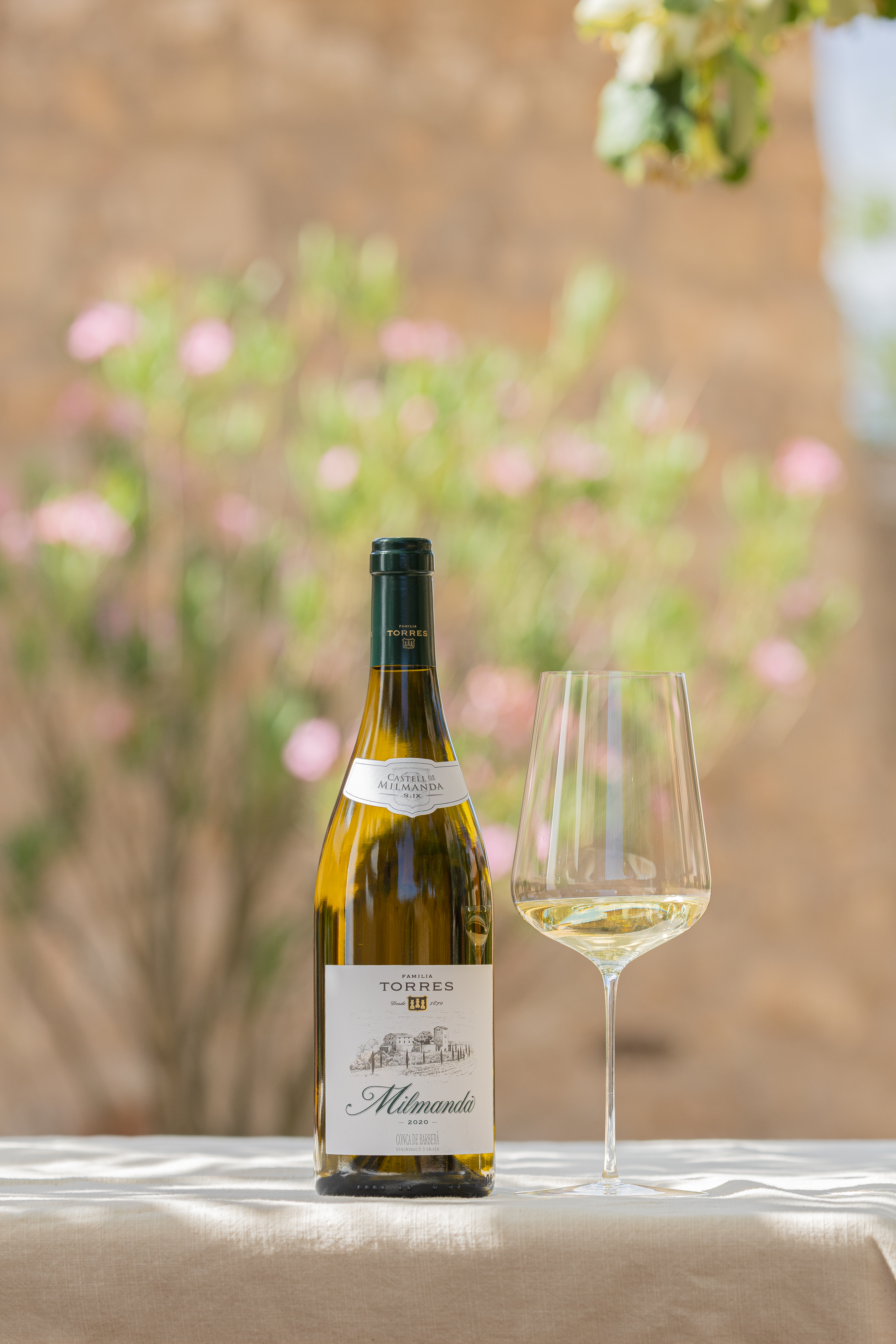MILMANDA

The Legend of a Thousand-Year Legacy
Nestled into the foothills of the Sierra de Prades in the DO Conca de Barberà appellation of origin, the Milmanda estate is surrounded by hills of Mediterranean scrubland, steeped in the scent of rosemary, thyme, juniper…and layers of history. An intangible asset that takes on material form as one of the continent’s most acclaimed Chardonnays.

Chardonnay vineyards on the estate that produces Milmanda, in DO Conca de Barberà.
DO Conca de Barberà
Conca de Barberà lies in the northern part of Tarragona province, extending across a plain between the Francolí and Anguera rivers, where the mountains – primarily the Sierra de Prades – protect the area from the influence of the sea. The natural conditions combined with the region’s history and traditions make this an exceptional winegrowing enclave.
A Story That Spans Millennia
The site presents the ideal conditions to grow Chardonnay in an enclave imbued with a rich winegrowing history that can be traced back to the cultural traditions of the Cistercian Order. Crowning the estate is the castle of Milmanda, which seems eager to compete with the iconic Poblet Monastery. Two architectural gems on equal footing, separated only by time.
 Milmanda Castle in DO Conca de Barberà
Milmanda Castle in DO Conca de Barberà
Archaeological findings at the site are a testament to the many peoples who left their mark here, including Iberians, Greco-Phoenicians, and Romans. The latter were responsible for establishing the Roman villa next to the present-day estate, taking advantage of the site’s proximity to Via Aurelia, the road that connected the ancient towns of Tarraco and Llerda (now Tarragona and Lleida).
The Visigoths built the first castle here, later fortified by the Arabs. In 1136, Count Ramon Berenguer IV liberated the region from Islamic rule, and Milmanda became a feudal and abbatial property. From then on, historical records show the various transfers of ownership. Milmanda represents one of the oldest documented vinicultural histories in the wine world.
In the 13th century, the monks of Poblet turned the dominion into a farm. The castle stood at the centre of, and bore stony witness to, the battles between the Knights Templar and the abbots. By the 16th century, the castle’s rustic, military character gave way to an oasis of palatial peacefulness where prominent individuals and dignitaries resided during their visits to Poblet.
The Estate & the Wine
The estate lies at an average elevation of 500 metres above sea level. The soils are limestone and grey-brown limestone. The Mediterranean climate has a continental influence with an average temperature of around 14.5ºC. The Sierra de Miramar tempers the summer heat with a light yet noticeable sea breeze that picks up at dusk.
The Chardonnay vines face south to take advantage of the sunlight. This contributes to healthier plants and harvests. The climatic and geological conditions allow the variety to unfold its full typicity, the hallmark of this thousand-year-old region.

The Milmanda wine from DO Conca de Barberà.
“If a Chablis must reach 11% to attain the category of a Grand Cru, the grapes of Milmanda naturally surpass this richness in sugar every time.” Mauricio Wiesenthal
Environmentally conscientious viticultural practices combined with beautifully ripened harvests, with an emphasis on quality rather than high yields, lay the foundations of the wine to come. In terms of winemaking and ageing, Milmanda matures for 4 months in 300-litre barriques and 1500-litre foudres, 50% of which are new French oak. The wine then ages on its lees for another 12 months in stainless steel tanks.
Under temperature-controlled conditions, the wine can spend months on its lees, gradually absorbing its own yeasts and thereby enriching its aromas.
Such a natural fermentation and ageing process does not require excessive winemaking interventions. Since the wine remains in a reductive environment with its own lees, the addition of sulphites is almost unnecessary.
The resulting wine is exceptionally elegant, unique in personality, and firmly structured. It reveals ripe, sensual aromas reminiscent of pralines and hazelnut, honeysuckle, honey, and yellow clingstone peach intermingled with mature, oak-imparted notes of toast bread, smoke, and coffee.
Accolades
Since the very first vintage, Milmanda has earned praise and recognition, both in Spain and internationally:
· 2021 vintage: 92 points, JamesSuckling.com 2023
· 2021 vintage: 92 points, JamesSuckling.com 2021
· 2020 vintage: 97 points, Grupo Gourmets 2024
· 2020 vintage: 97 points, Proensa 2024
· 2020 vintage: 97 points, Vivir el vino 365 vinos al año 2024
· 2020 vintage: 94 points, Peñín 2024
· 2020 vintage: 94 points, JamesSuckling.com 2023
· 2020 vintage: 94 points, JamesSuckling.com 2020
· 2019 vintage: 97 points, Proensa 2023
· 2019 vintage: 97 points, Semana Vitivinícola 2023
Are you curious about trying the wine? If so, you can purchase it aquí.
At Milmanda, history and culture exist on equal footing; a dialogue between an ancestral heritage of caring for the land and a winemaking legacy that fills us with a sense of responsibility and inspires us to keep making a wine that embodies who we are and who we want to be.
